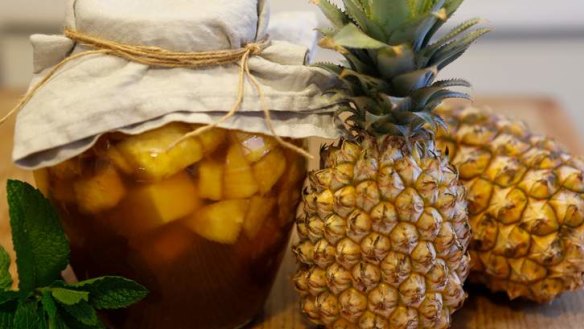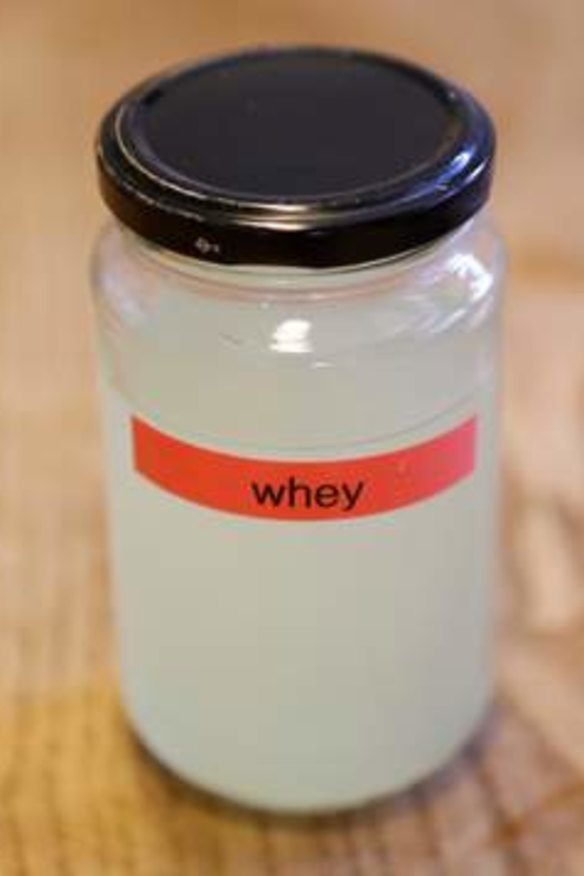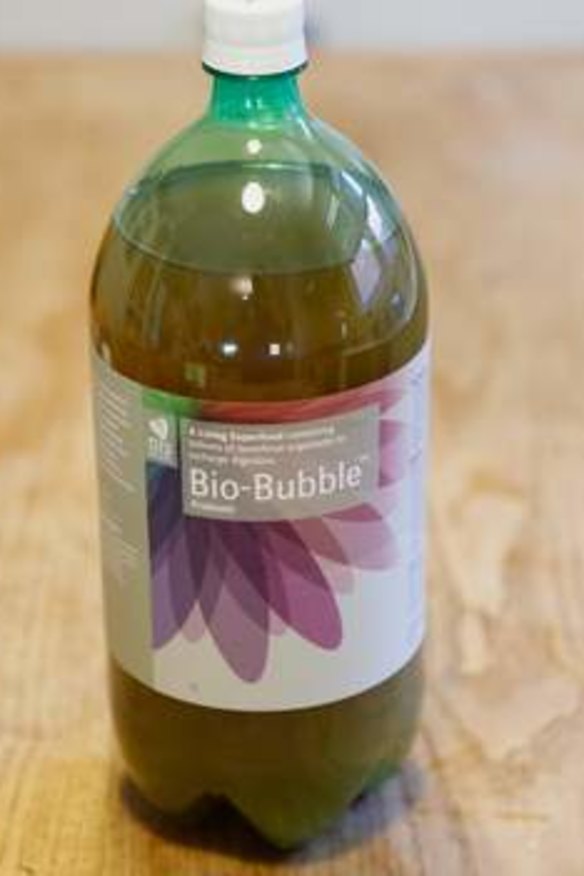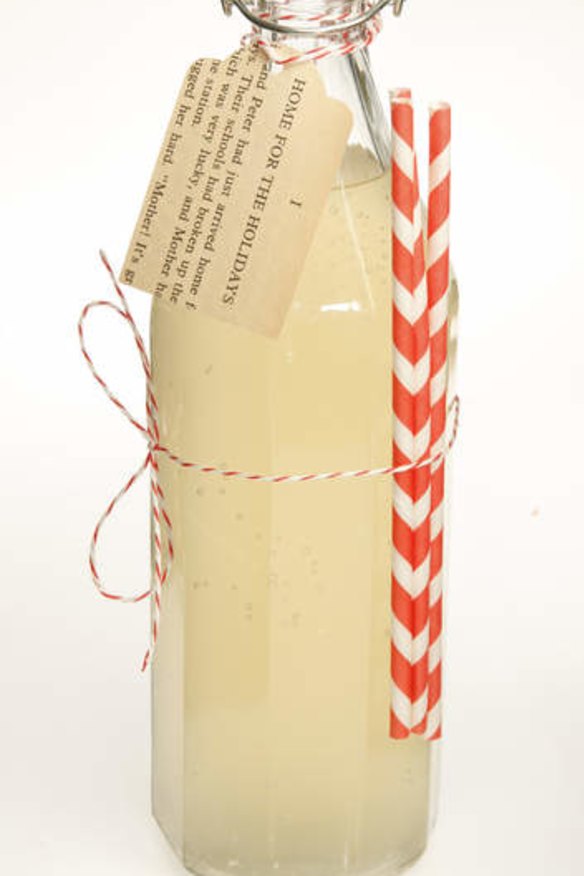How to make soft drinks at home
Arabella Forge demonstrates how easy it is to make your own fizzy drinks at home.

There's something special about a fizzing, bubbling drink of lemonade or ginger beer. Heading into summer, what could be better than sitting on the lawn with a tall, frosted glass of effervescent soda with a few cubes of ice, topped with some sprigs of mint?
But where modern, sugary soft drinks are quickly passing out of favour, home-brewed soft drinks, sometimes called health tonics, are becoming more popular.
History
Before the soda fountain and sugar-rich carbonated water were invented, health tonics were made in home kitchens using a handful of ingredients sourced from the cool room or pantry. Left to brew on the kitchen bench for a couple of days, a wildly delicious sour flavour would develop with the aid of naturally occurring microbes and healthy bacteria.
These tonics were a frugal way to quench thirst and also provided key nutrients – minerals, probiotics and medicinal herbs – in an easily digestible and palatable form.
The key ingredients are natural sweeteners such as fruit and a source of unrefined sugar, a fermentation starter and herbs or plant roots.

Health benefits
Herbalists have long been making these beverages for their health benefits. My fellow fermenting enthusiast Gemma Davies, a herbalist and blogger (http://www.folkklore.com) makes regular batches of home-brewed beer using wild herbs such as nettle, borage, lemon balm, schizandra, wild hibiscus and strawberry eucalyptus. Gemma sees it as a delicious way of consuming medicinal herbs. Why take them in a capsule when they can be enjoyed in a home-brew?
How it fizzes

Naturally carbonated, home-brewed soft drinks utilise lactic acid bacteria (also known as lacto-ferments) that exist naturally in small amounts on the skins of most fruits and vegetables. But you will also need to add a starter, which inoculates the healthy bacteria into the brew and kick-starts the fermentation process.
The added sugar and fruit provide the food for the bacteria, and carbon dioxide is produced as a natural byproduct during the fermentation process.
A basic guide to what you will need:

Fruit or other natural flavour: pineapples, ginger, cider apples or medicinal herbs such as nettles, borage or lemon verbena.
Fermentation starter: whey is probably the easiest and least expensive starter culture for home soft-drink makers. It is made by separating raw milk curds from liquid whey. Curds and whey can be made with raw milk. It can also be separated from natural yoghurt.
If neither of these options appeals, try a commercially made liquid probiotic starter such as Bio Bubble. This is available at most health food stores or can be sourced through their distributor. Grainfields Australia also makes a variety of liquid probiotic drinks, which can be bought online.
Sugar: home brewers prefer less-refined sources of sugar such as rapadura (also known as sucanat) sugar, made by dehydrating cane juice to fine granules. You can also try coconut sugar, rice malt or molasses, which are not as refined as conventional white sugar. Raw honey doesn't ferment well as it contains a number of antimicrobial substances that will inhibit the fermentation process.
Trouble-shooting
Creating a home-brewed, naturally carbonated soft drink is not without its challenges. For one thing, the rate of carbon dioxide production is slightly variable with each batch. It can depend on the quantity and seasonality of the fruit, the temperature and the naturally occurring bacteria present in the atmosphere.
This may be why there aren't many “healthy” soft drinks available commercially, but are instead limited to home kitchens and community co-operatives – small-scale enterprises that can monitor their progress and take pleasure in their diverse, unpredictable flavours and levels of fizz.
The fun side
Home brewing would have to be one of the most enjoyable of kitchen challenges. Who hasn't heard a story about a batch of ginger beer (with the help of too much yeast) deciding to liberate itself in an explosion of bubbles and shattering glass in the pantry? Or a root beer that decides to take off while still in its Christmas gift wrapping?
Once I awoke at 3am to the sound of smashing glass. My kitchen was covered by remnants of glass bottles and by pieces of pineapple skin. Don't be deterred though ... I recommend testing brews regularly (a sip each day to keep the doctor away) to ensure they are not progressing too fast and preparing to burst out of their bottles.
As a safety measure, you can also wrap glass bottles in a thick, protective towel, or opt for plastic packaging, with room for expansion. Personally, I prefer using glass, but monitoring the brews closely. I tend to drink the pineapple drink within a few days of it being ready. Often I don't even bother bottling it, but just pour it straight from the fermentation vessel into the serving jug.
Easy on the sugar
Commercial soft drinks are notorious for their high sugar content – one 240-millilitre bottle is estimated to contain 25 grams of sugar, the equivalent of five teaspoons of white table sugar. Natural soft drinks contain less sugar. With fresh (unfermented) ingredients, every 240-millilitre serve would contain approximately 15 grams, which is roughly three teaspoons per serve, yet during the fermentation process this sugar is eaten up by the bacteria and wild yeasts. A small amount of sugar may still be present in the final brew – it depends how long you leave it to ferment.
The best way to monitor the sugar content is to taste-test the brew every few days and monitor for carbonation and bubbles. The brew will gradually start to taste less sweet and more sour as it ferments.
Alcohol
There is a small amount of alcohol present in the final brew – around 0-1 per cent (negligible), but more if you add yeast. If you are concerned you can purchase a hydrometer to test for alcohol content. They are sold for about $20 at most home brew shops.
Arabella's simple tepache (pineapple soft drink recipe)
Ingredients
8 cups fresh pineapple, skin removed and chopped into 2cm cubes (roughly equivalent to one large pineapple.)
* I chose to remove the skin as sprays inhibit the fermentation process (organic pineapple is OK).
¾ cup rapadura sugar or coconut sugar
½ cup of whey (or 1 cup of commercially brewed liquid probiotic)
½ tsp sea salt
Method
In a small saucepan, combine one cup of filtered water (chlorine inhibits the fermentation process) with the sugar. Gently heat, and stir until sugar is dissolved. Allow to cool to room temperature.
In a three-litre glass vessel, add the pineapple, starter culture (if you are using whey, add all of it; if you are using a commercial probiotic liquid, just add half for now), sea salt and sugar mixture. Gently stir with a wooden spoon.
Cover with a tea towel and place in a corner of your kitchen bench.
Leave to ferment for three to five days, but check it regularly and give it a poke and a stir each day. If you are using a commercial probiotic, add the remaining mixture on day two. It should start to bubble and foam by day three. You will also need to push the fruit bits down as often as possible to avoid exposure to air.
The longer the drink is left to ferment, the less sweet and more sour it will taste. I recommend taste-testing from day two onwards, and finding your perfect flavour balance.
Once you are happy with how it tastes, it should be consumed immediately or stored in the refrigerator. It can be stored sealed or unsealed.
To serve, pour the liquid and chunks of pineapple into a glass jug, add some ice, fresh mint leaves, a little fresh ginger and fresh lemon juice to taste.
Makes three litres (including pineapple chunks)